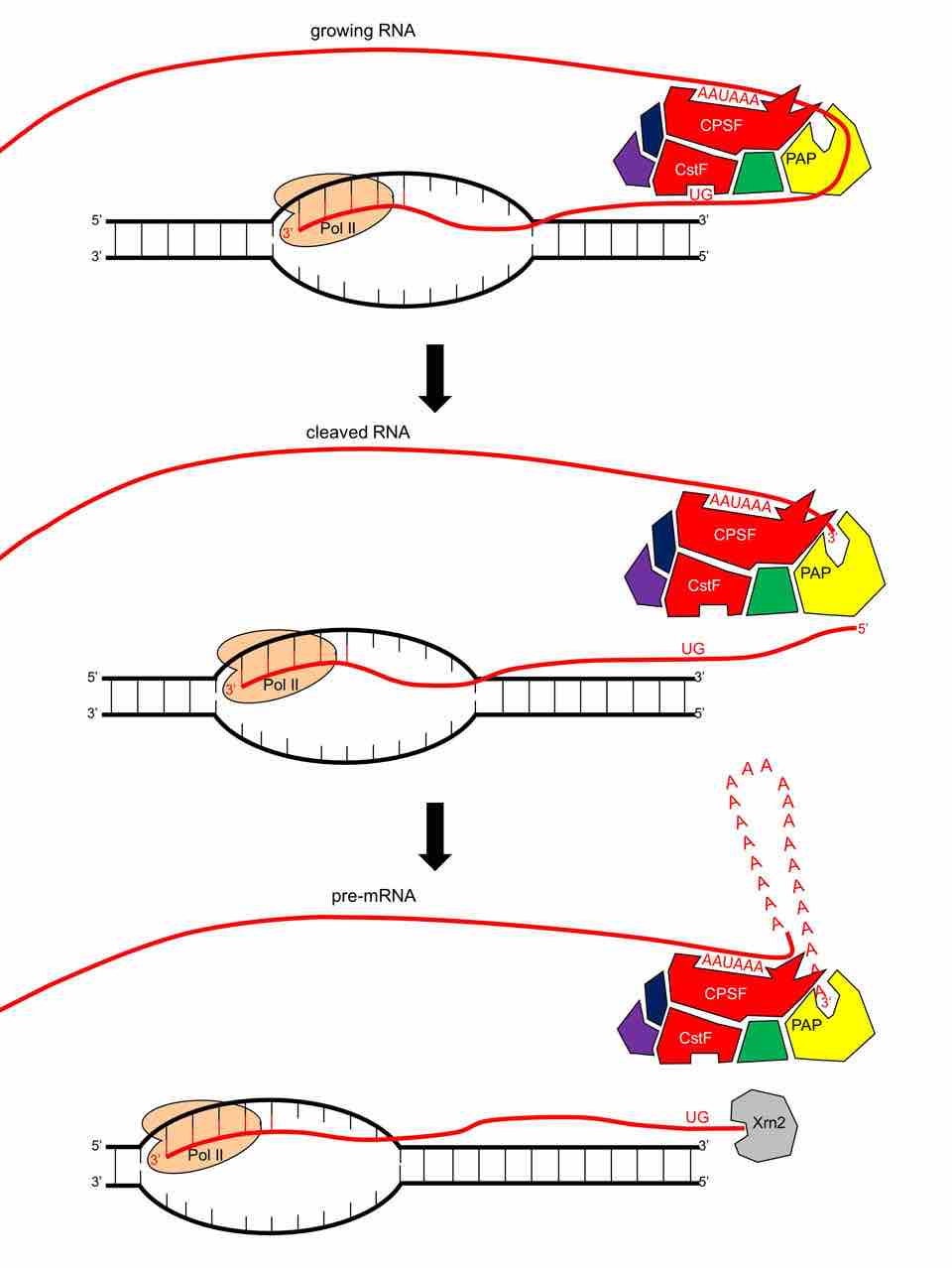Elongation and Termination in Eukaryotes

Transcription termination by RNA Polymerase II on a protein-encoding gene.
RNA Polymerase II has no specific signals that terminate its transcription. In the case of protein-encoding genes, a protein complex will bind to two locations on the growing pre-mRNA once the RNA Polymerase has transcribed past the end of the gene. CPSF in the complex will bind a AAUAAA sequence, and CstF in the complex will bind a GU-rich sequence (top figure). CPSF in the complex will cleave the pre-mRNA at a site between the two bound sequences, releasing the pre-mRNA (middle figure). Poly(A) Polymerase is a part of the same complex and will begin to add a poly-A tail to the pre-mRNA. At the same time, Xrn2 protein, which is an exonuclease, attacks the 5' end of the RNA strand still associated with the RNA Polymerase. Xrn2 will start digesting the non-released portion of the newly synthesized RNA until Xrn2 reaches the RNA Polymerase, where it aids in displacing the RNA Polymerase from the template DNA strand. This terminates transcription at some random location downstream from the true end of the gene (bottom figure).
Source
Boundless vets and curates high-quality, openly licensed content from around the Internet. This particular resource used the following sources: